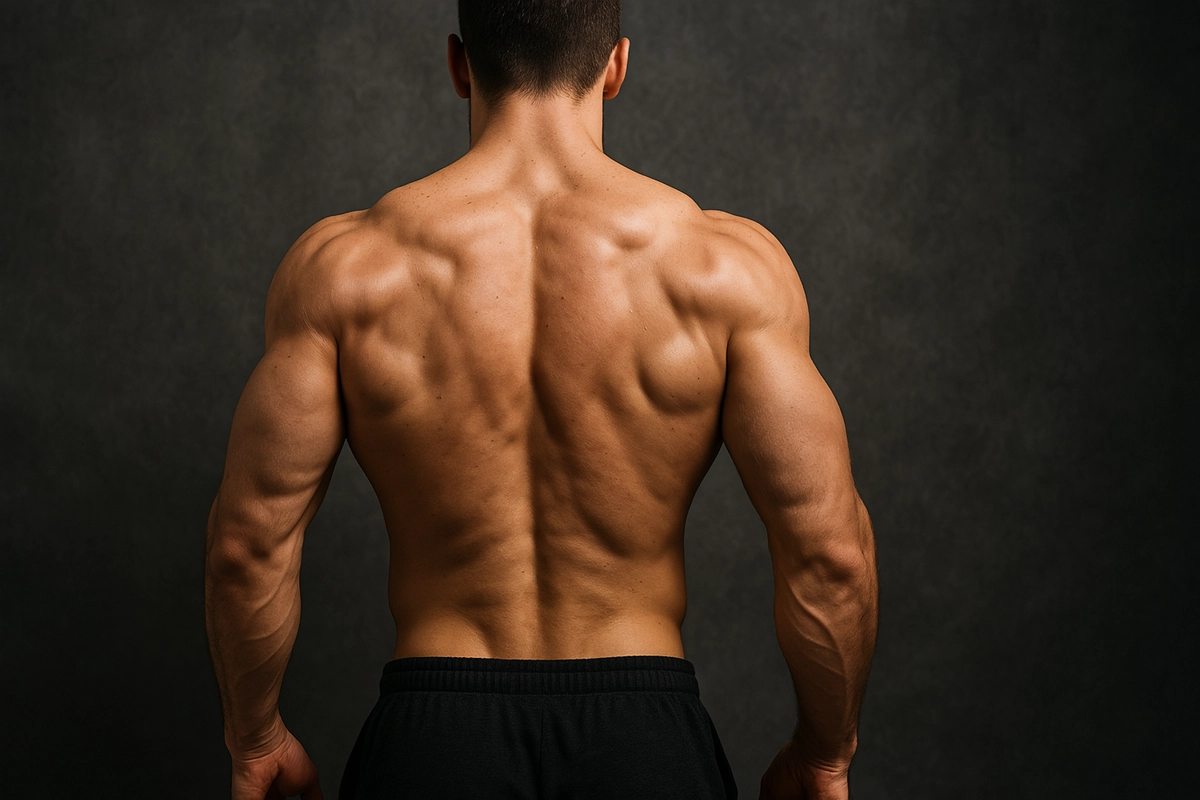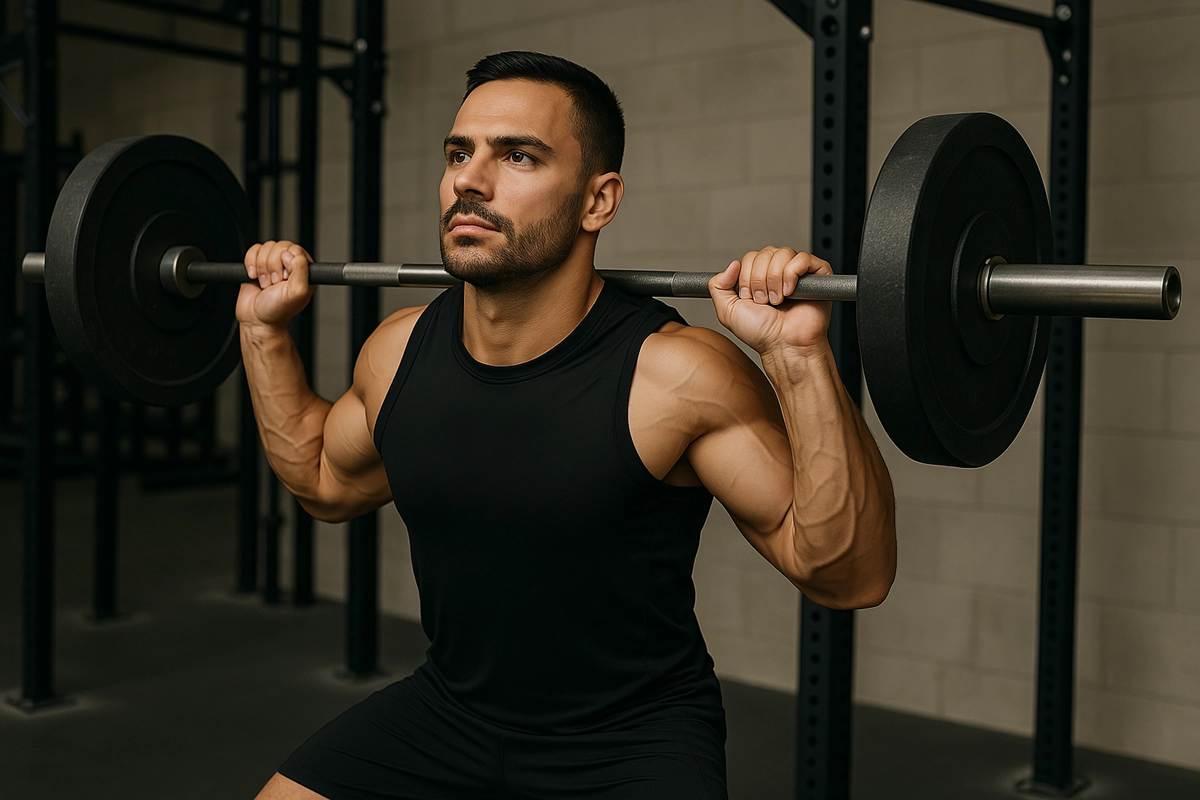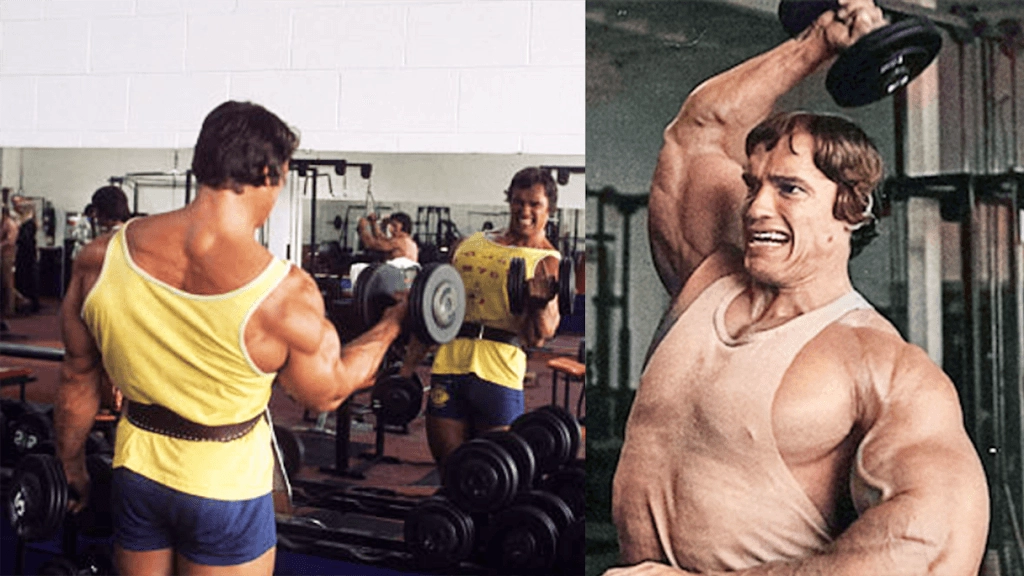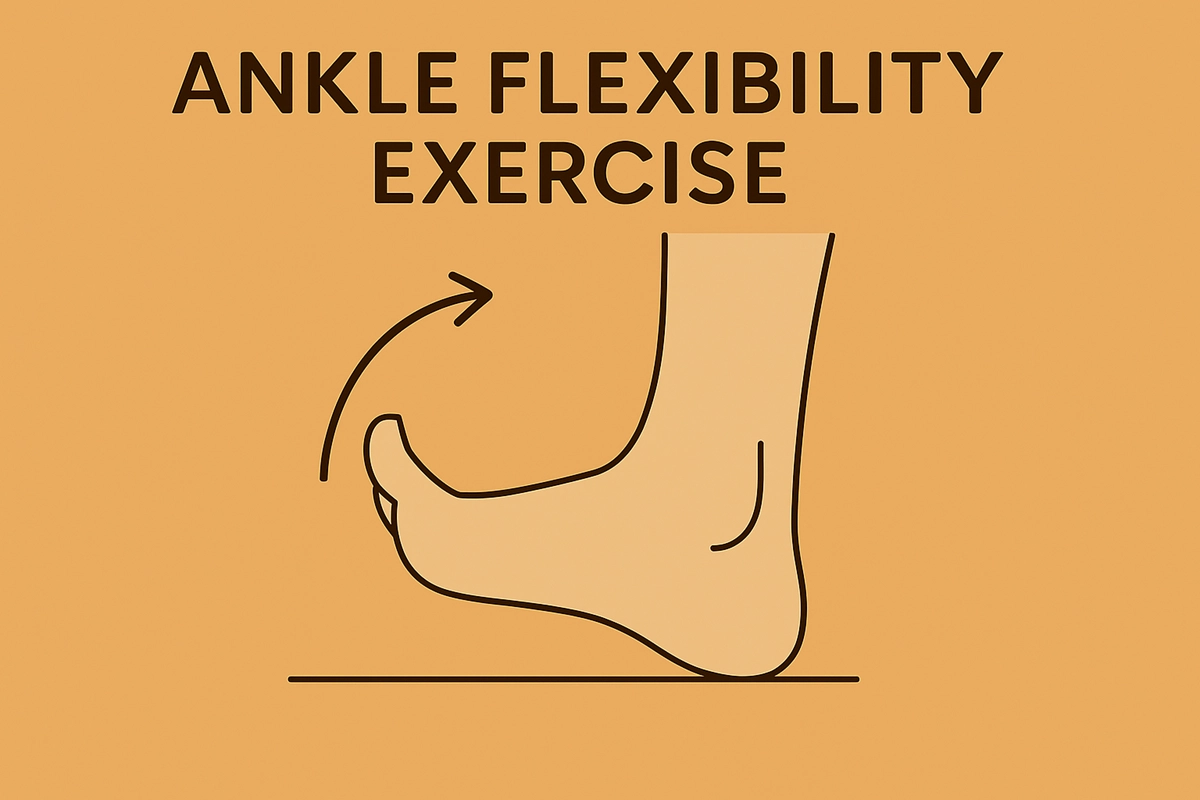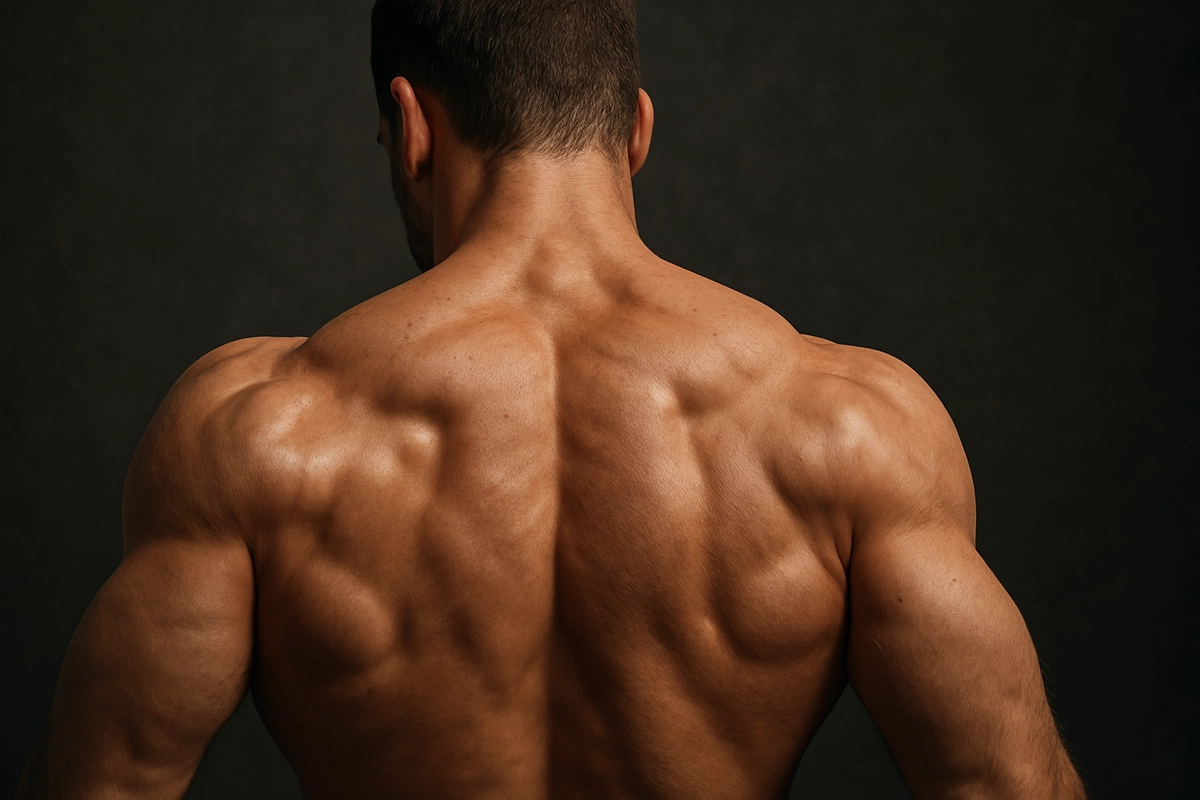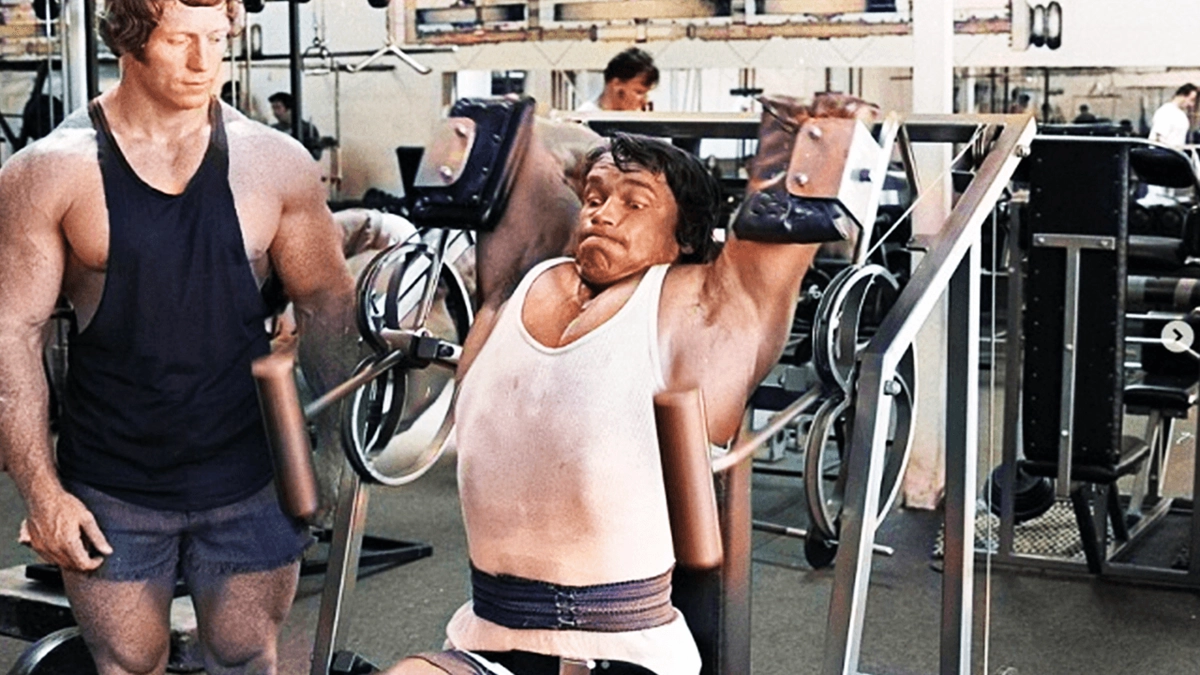While bodybuilding legends like Arnold built their legendary backs with basic barbells, today’s fitness industry wants to sell you complex machines and gadgets you don’t need. You’ll discover that the most effective back-building movements still revolve around the tried-and-true barbell.
Whether you’re looking to develop wider lats, thicker traps, or that coveted V-taper, mastering these fundamental barbell exercises will transform your physique just as they’ve done for champions throughout the decades.
The Benefits of Barbell Back Workouts
When it comes to building an impressive physique, barbell back workouts deliver unmatched benefits for overall strength and muscle development. These compound lifts engage multiple muscle groups simultaneously, making your training sessions more efficient and effective.
Training your back with barbell exercises targets every major muscle in your posterior chain, from the lats and traps to the often-overlooked rhomboids and teres major muscles. You’ll also strengthen your grip, forearms, biceps, and shoulders while performing these movements.
Just as Arnold always emphasized, the barbell is your ultimate tool for building a thick, dense back.
What makes barbell back training superior is its ability to overload these complex muscle groups progressively. Whether you’re doing rows or deadlifts, you’re stimulating maximum muscle growth through exercises that mimic natural movement patterns.
How to Get Strong Back Muscles Using a Barbell?
Building strong back muscles with a barbell requires mastering fundamental movement patterns and progressive overload techniques. Start with the barbell deadlift, which targets your posterior chain and builds overall back strength. Focus on maintaining proper form while gradually increasing the weight.
The bent-over barbell row is your next essential movement. Keep your back straight, pull through your elbows, and squeeze your lats with each rep. Remember Arnold’s famous advice: “Feel the muscle working with every rep.”
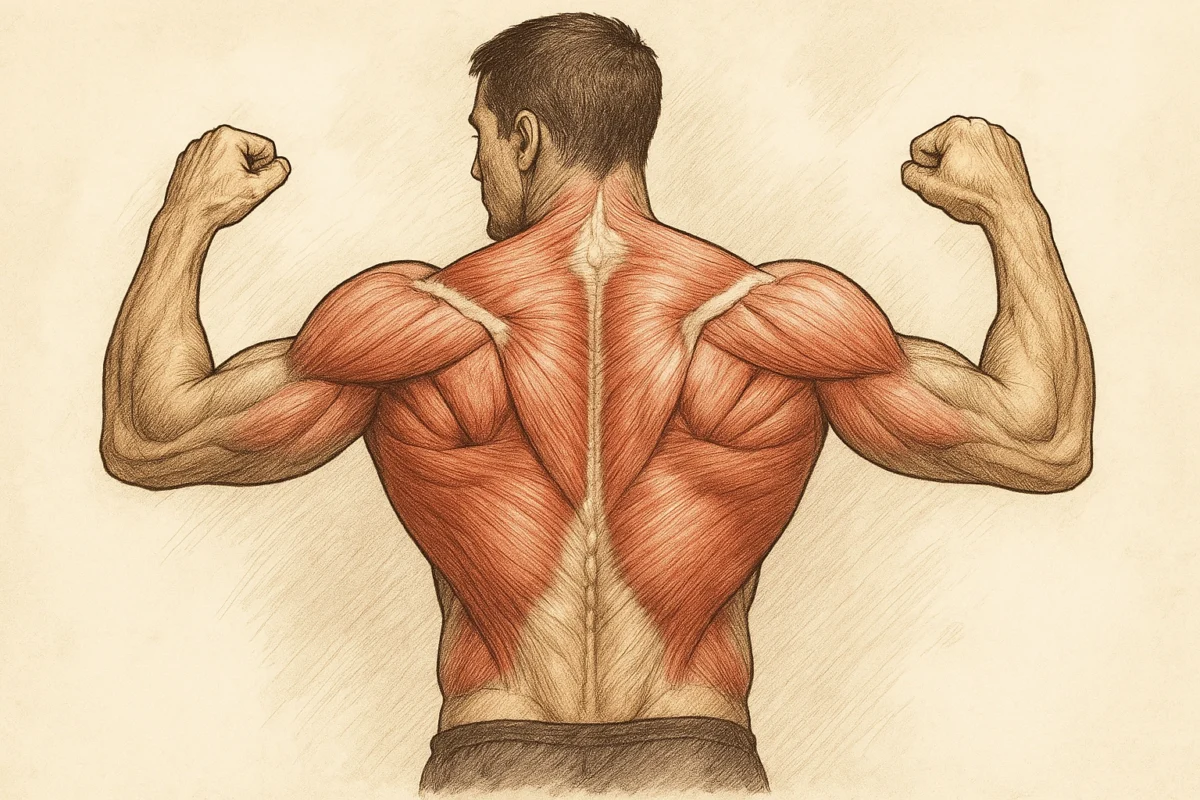
While you’ll need a pull-up bar for vertical pulling, your barbell exercises form the foundation of muscle building. Train with purpose and consistency, focusing on controlled movements rather than heavy weights with poor form.
Your back development depends on establishing that vital mind-muscle connection while progressively challenging yourself with heavier loads.
Back Workouts for a Strong Back
You’ll find three distinct barbell workouts that target your back from different angles to build overall strength and muscle.
Arnold Schwarzenegger famously said, “The back is the foundation of a powerful physique,” and these workouts adhere to his principle of targeting muscles from multiple angles.
Whether you’re looking to build your upper back, lower back, or achieve comprehensive back development, you’ll find a workout that aligns with your goals.
#Workout 1: Barbell Full Back Workout
This extensive barbell back workout targets every major muscle group in your posterior chain through three powerful compound movements.
You’ll start with rack pulls, a deadlift variation that maximizes muscular strength through a shortened range of motion. Perform three sets of 6-10 reps, focusing on the hip hinge pattern.
Next, move on to bent-over rows for three sets of 8-12 reps, which will help develop your lats and middle back thickness.
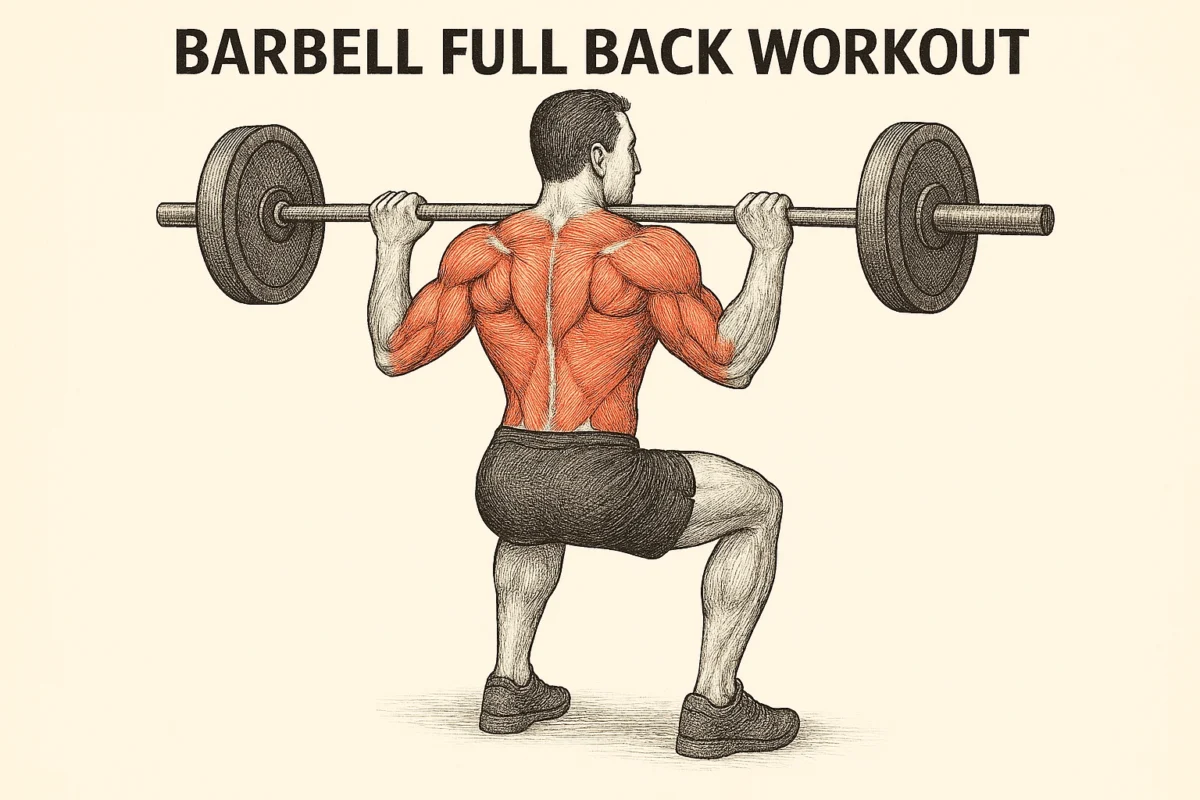
Finally, you’ll tackle Meadow rows, performing three sets of 10-15 reps to build unilateral strength and achieve that sought-after V-taper.
As Arnold would say, “The back is the key to a powerful physique.”
This workout embodies that philosophy, combining heavy pulls and rowing variations to stimulate maximum muscle growth and development.
#Workout 2: Barbell Upper Back Workout
While many lifters chase the elusive V-taper through lat pulldowns, a barbell-only upper back workout can forge impressive development when programmed correctly.
This targeted routine focuses on activating those hard-to-reach upper back muscle fibers through three compound exercises.
Start with seal rows, performed lying chest-down on a raised bench, hitting 3 sets of 8-10 reps. This movement maximizes upper back isolation by eliminating lower back involvement.
Follow with Pendlay rows for 3 sets of 8-12 reps, explosively pulling from a dead stop to engage your rhomboids and rear deltoids.
Finally, cap off your session with barbell shrugs, performing 3 sets of 10-15 reps to stimulate those upper traps for that powerful yoke look Arnold was famous for.
#Workout 3: Barbell Lower Back Workout
Building a bulletproof lower back demands laser-focused attention on two powerhouse movements that’ll test your mental and physical limits.
Unlike upper back training, this workout strips away complexity to focus purely on developing raw strength and muscle in your lower back region.
Start with the sumo deadlift, performing 3 sets of 5-8 reps with heavy weight. This wide-stance variation targets your lower back while engaging your hamstrings and glutes.
Follow this with the good morning exercise for 3 sets of 8-10 reps, maintaining strict form throughout each set. This movement isolates your lower back muscles while simultaneously strengthening your posterior chain.
You’ll know you’ve hit the sweet spot when both exercises leave your lower back thoroughly fatigued – that’s precisely what you want for maximum growth and strength gains.
The 9 Best Barbell Back Exercises
When it comes to building a powerful back, you’ll want to master these essential barbell movements that have stood the test of time. The conventional deadlift and bent-over row serve as foundational exercises, while the sumo deadlift offers a wider stance variation that targets your back muscles from a different angle.
For advanced strength gains, you’ll find that the Pendlay row delivers explosive power from a dead stop, and rack pulls allow you to overload the upper portion of the deadlift movement.
Exercise 1: Conventional Deadlift
You’ll need to set up with your feet hip-width apart and the barbell positioned close to your shins, directly over your mid-foot.
Before initiating the lift, brace your core, pull your shoulders back, and grip the bar just outside your legs, keeping your arms straight and your chest up.
Maintain a neutral spine throughout the movement as you drive through your legs and hips to stand up, pulling the weight up along your body until you’re fully upright with your hips and knees locked.
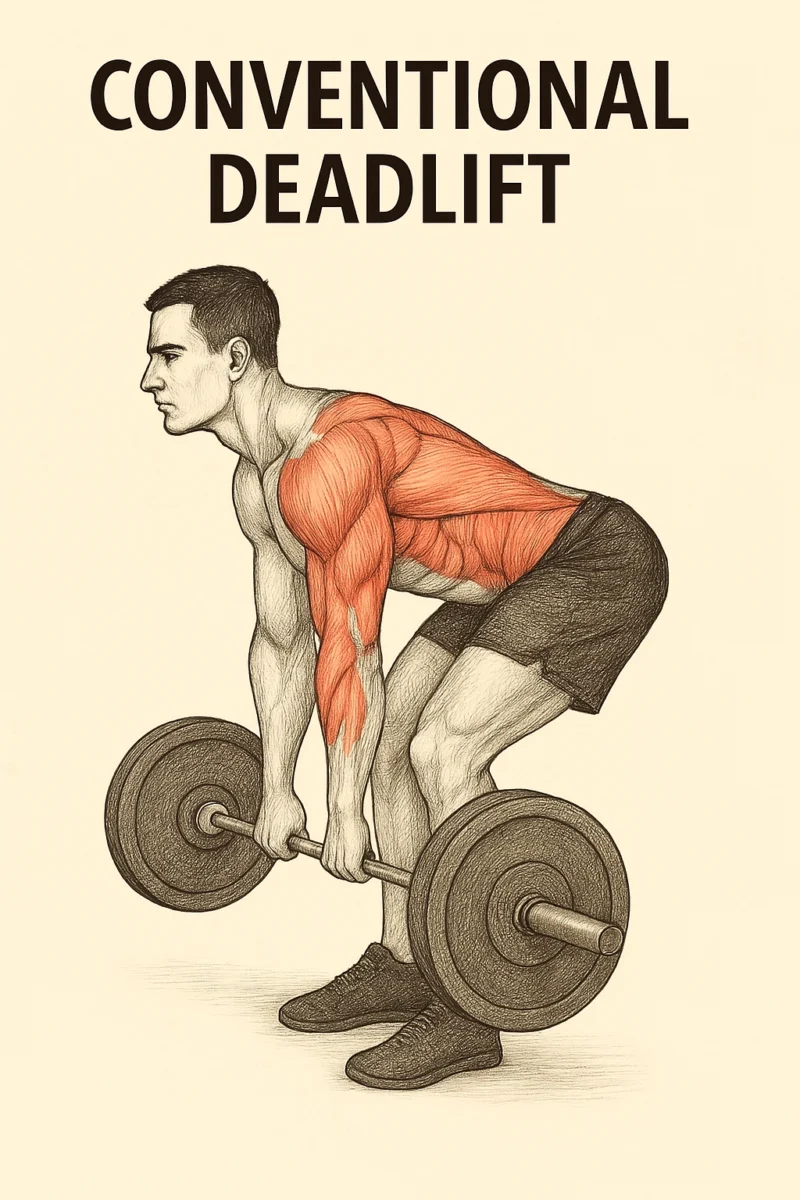
#Exercise Tips:
Mastering the conventional deadlift requires precise form and setup to maximize your back gains while preventing injury.
By engaging your latissimus dorsi and posterior deltoids, you’ll build maximal strength through progressive overload.
Stand with feet hip-width apart, grab the bar with hands shoulder-width apart, and maintain a straight back throughout the movement, just as you’d perform strict barbell rows.
Exercise 2: Bent-Over Barbell Row
You’ll find the bent-over row to be one of Arnold’s favorite exercises for building an impressive, powerful back while simultaneously strengthening multiple muscle groups.
For ideal results, focus on maintaining a tight core with your torso nearly parallel to the ground as you pull the barbell toward your lower chest. Your lower back should remain in a neutral position throughout the movement. If you experience any discomfort, consider switching to supported variations or using lighter weights until your form is perfect.
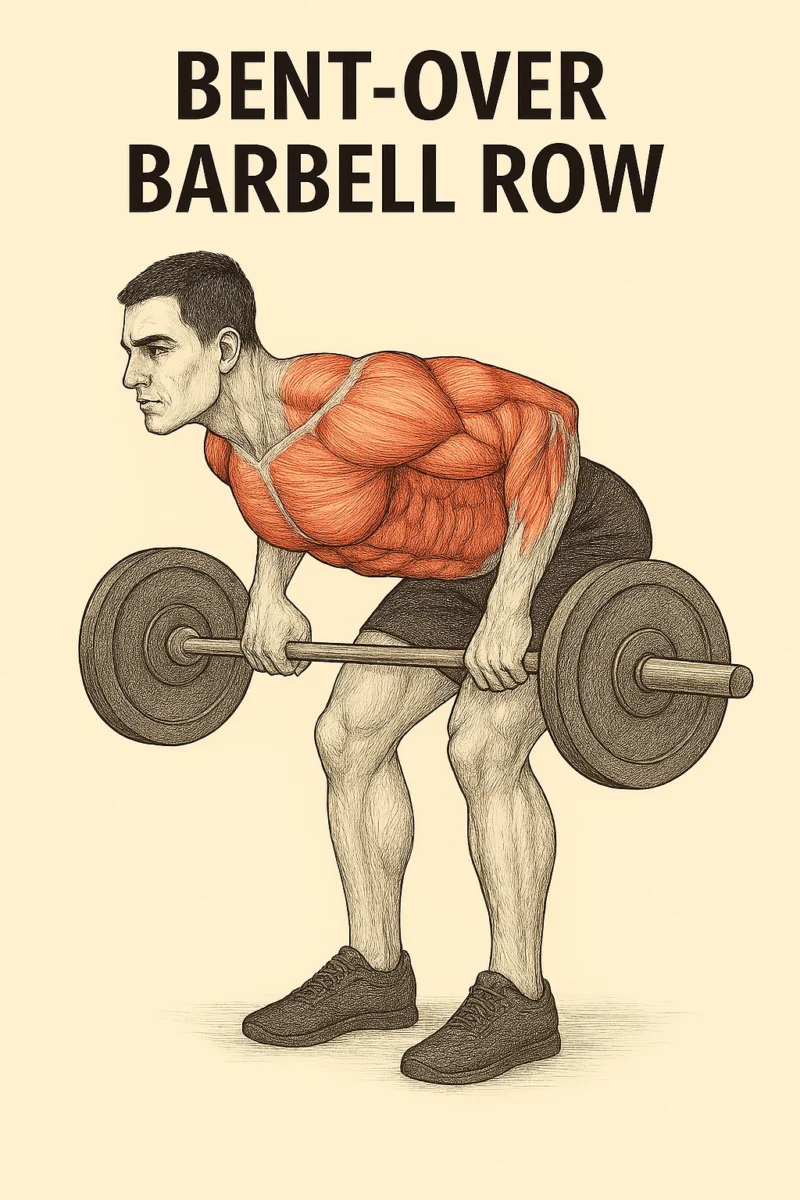
#Exercise Tips:
The bent-over barbell row stands as one of the most effective compound exercises for building a thick, powerful back.
To maximize your results, keep your core tight and shoulder blades retracted throughout the movement. Your back should remain parallel to the floor while you pull the barbell toward your stomach.
Avoid letting your torso rise during the exercise, as this reduces the engagement of your erector spinae muscles.
Exercise 3: Sumo Deadlift
When performing the sumo deadlift, you’ll need to position your feet wider than shoulder-width with toes pointed slightly outward and grip the barbell inside your legs.
Keep your chest up, back straight, and core engaged as you drive through your heels to lift the weight in one fluid motion.
You’ll maximize back engagement by maintaining proper form throughout the movement, keeping the bar close to your body and your shoulders pulled back.
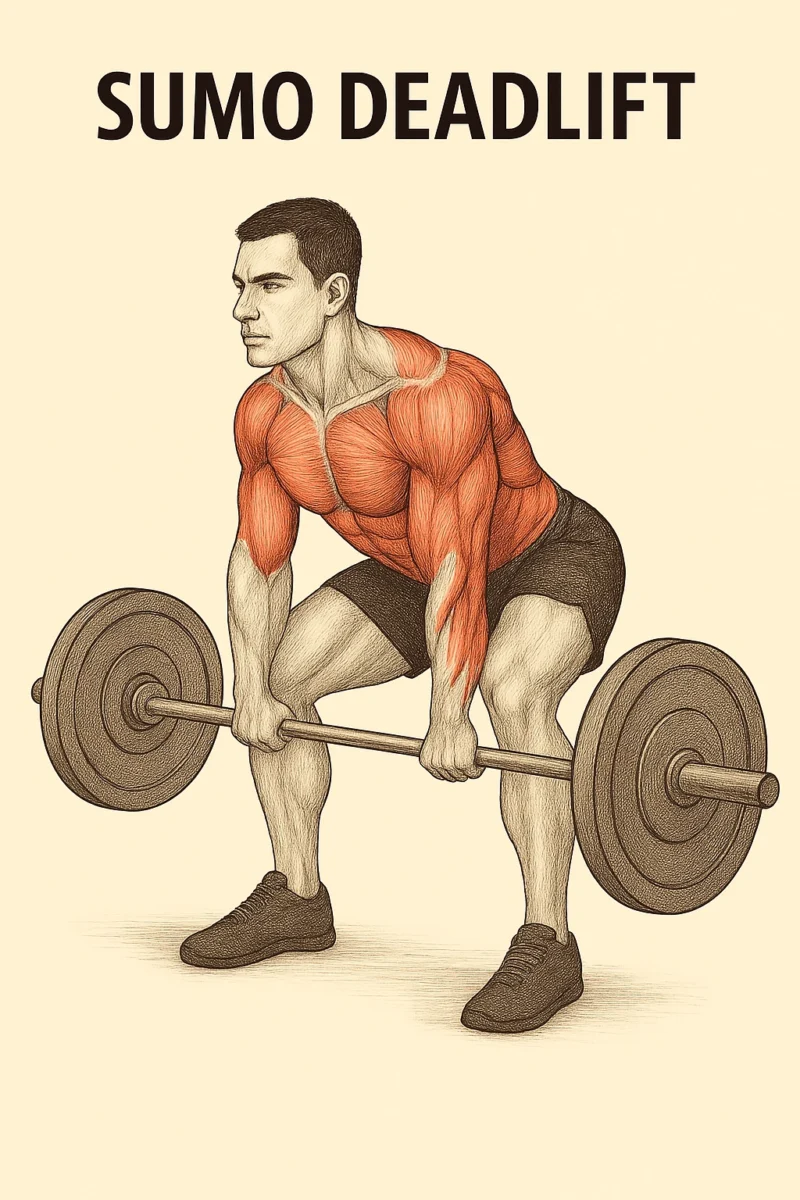
#Exercise Tips:
For mastering the sumo deadlift, proper form and technique are essential to prevent injury while maximizing your back development.
Unlike traditional barbell rows, stand with a wider stance and toes pointed outward to reduce back pain. Keep your range of motion controlled as you perform each rep.
For a mechanical drop set, focus on the muscles worked by maintaining a neutral spine and a tight core throughout the movement.
Exercise 4: Pendlay Row
During your Pendlay row, you’ll start by positioning yourself in a bent-over stance with the barbell resting on the floor, maintaining a straight back at roughly parallel to the ground.
You’ll explosively pull the barbell to your lower chest while keeping your torso completely still, engaging your lats and upper back muscles throughout the movement.
Let the barbell return entirely to the floor between each rep, resetting your form and preparing for the next explosive pull.
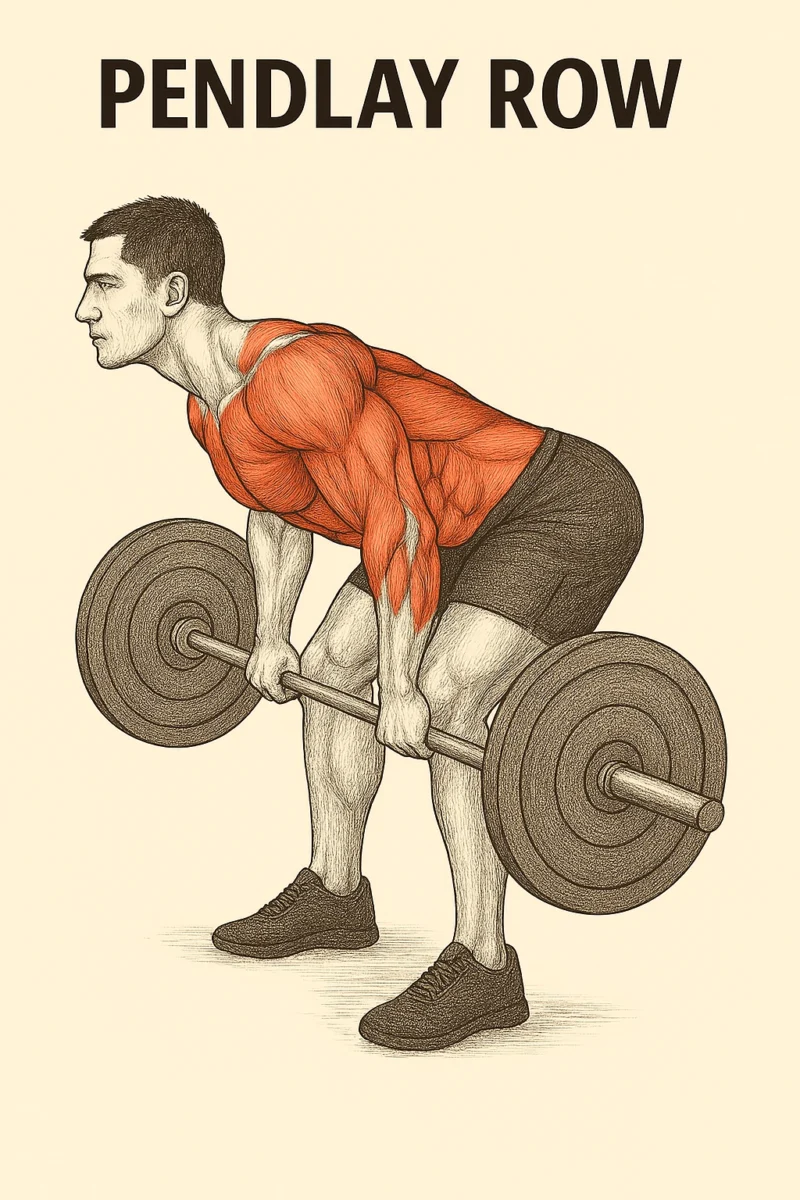
#Exercise Tips:
The Pendlay Row stands out as one of the most effective barbell movements for building explosive back strength and muscle mass.
Unlike traditional wide-grip barbell rows, this variation requires you to reset after each rep, making it more challenging.
Stand close to the bar, grip it shoulder-width with an overhand grip, and maintain a straight spine throughout the movement.
Exercise 5: Rack/Block Pull Deadlifts
You’ll want to set your barbell on blocks or pins in a squat rack at about knee height to begin this powerful back-focused variation of the deadlift.
Since the bar starts higher than in a traditional deadlift, you’re able to handle heavier weights while focusing primarily on the upper portion of the movement, where your back muscles are most engaged.
Keep your core tight, chest up, and back straight as you pull the weight up, just as Arnold emphasized the importance of maintaining perfect form even with heavier loads.
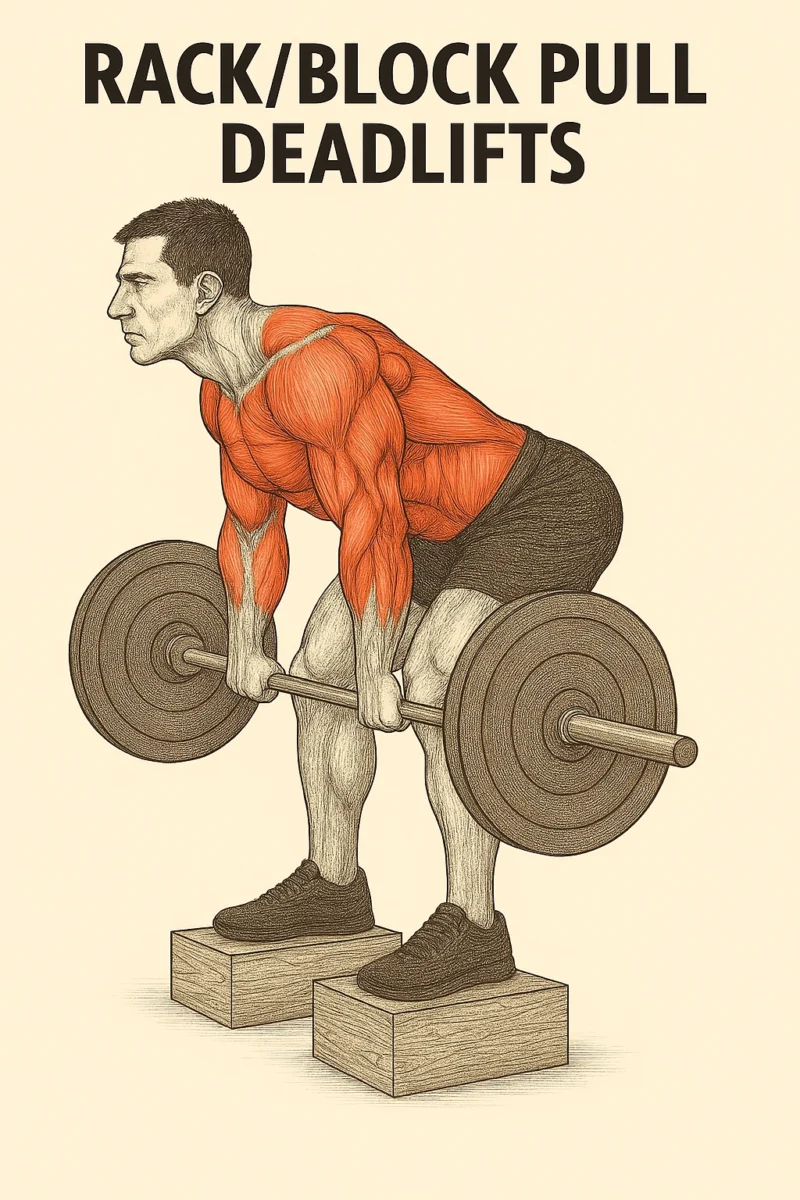
#Exercise Tips:
Mastering rack/block pull deadlifts starts with proper setup and positioning.
Set the barbell just above knee height on blocks or a rack, then approach it like you’d a regular deadlift. Keep your hands at shoulder width, maintain a slight knee bend, and engage your core.
As you pull the weight up, focus on driving your hips forward while keeping the barbell path straight.
Exercise 6: Seal Rows
You’ll find that seal rows are one of the most underrated barbell movements for targeting your entire back while keeping perfect form.
The chest-supported position eliminates cheating and lower back strain, allowing you to focus purely on rowing the weight with your lats and rhomboids.
Since you’re lying face-down on an elevated bench, you can load up the weight and create serious muscle growth – Arnold would approve of this exercise’s ability to sculpt thick, dense back muscles.
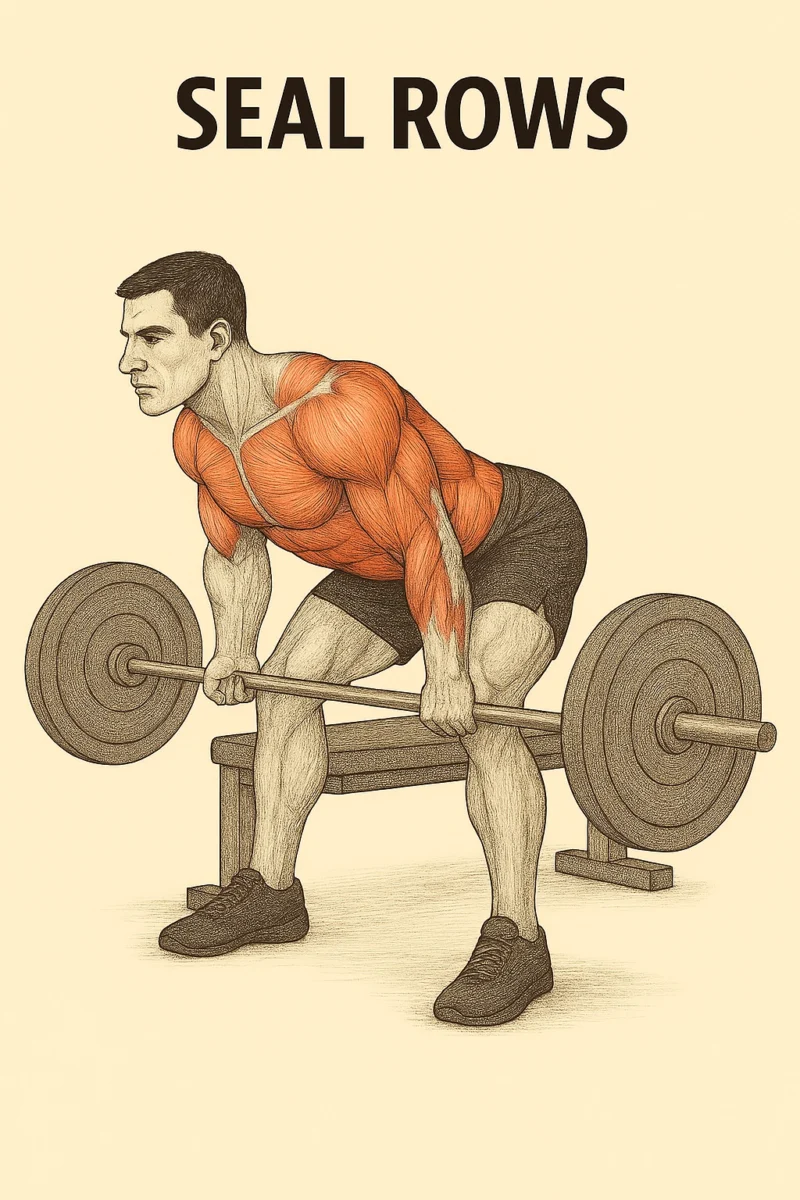
#Exercise Tips:
While seal rows might seem like an unusual exercise at first glance, they’re one of the most effective movements for isolating your back muscles without cheating.
Unlike traditional barbell rows or cable rows, this variation prevents you from using momentum. Keep your form strict and controlled, similar to a lat pulldown, but performed horizontally.
This unilateral barbell move maximizes muscle engagement, making it an ideal addition to any serious nutrition plan.
Exercise 7: Good morning
When performing the good morning, you’ll need to first position the barbell securely across your upper back as if setting up for a squat.
You’ll bend forward at the hips while maintaining a neutral spine, lowering your torso until it’s nearly parallel to the floor. Your hamstrings should feel an intense stretch as you hinge forward, and as you return to the starting position, focus on driving your hips forward while keeping your back straight throughout the movement.
#Exercise Tips:
Getting the barbell good morning right requires precise form to target your posterior chain effectively.
Unlike barbell rows or the Pendlay row, you’ll position the bar across your lower trap area for maximum control.
Keep your core tight and maintain a neutral back position throughout the movement.
Don’t rush – focus on feeling the stretch in your hamstrings before powering back up with your glutes engaged.
Exercise 8: Meadows Row
You’ll want to anchor one end of the barbell securely in a landmine attachment or corner, then position yourself parallel to the bar with your chest nearly parallel to the ground.
While keeping your core tight and back straight, grasp the loaded end of the barbell with one hand and pull it toward your hip, focusing on squeezing your lats at the top of the movement.
Lower the weight with control, allowing a full stretch in your lats before initiating the next rep.
#Exercise Tips:
The Meadows Row stands as one of the most effective unilateral back exercises you can perform with a barbell.
When you’re planning your upper back workout, this landmine row variation deserves a prime spot in your training plan. Many fitness enthusiasts even add a resistance band for extra tension at the top of the movement.
Remember to maintain a staggered stance and keep your core tight throughout the exercise.
Exercise 9: Barbell Shrugs
You’ll want to grab a loaded barbell with an overhand grip just outside shoulder width, keeping your chest up and core tight throughout the movement.
As you lift the barbell, shrug your shoulders up toward your ears as high as possible while maintaining control. Then pause briefly at the top before lowering back down.
Since Arnold loved heavy shrugs for building his massive traps, aim to progressively increase the weight while maintaining perfect form and full range of motion.
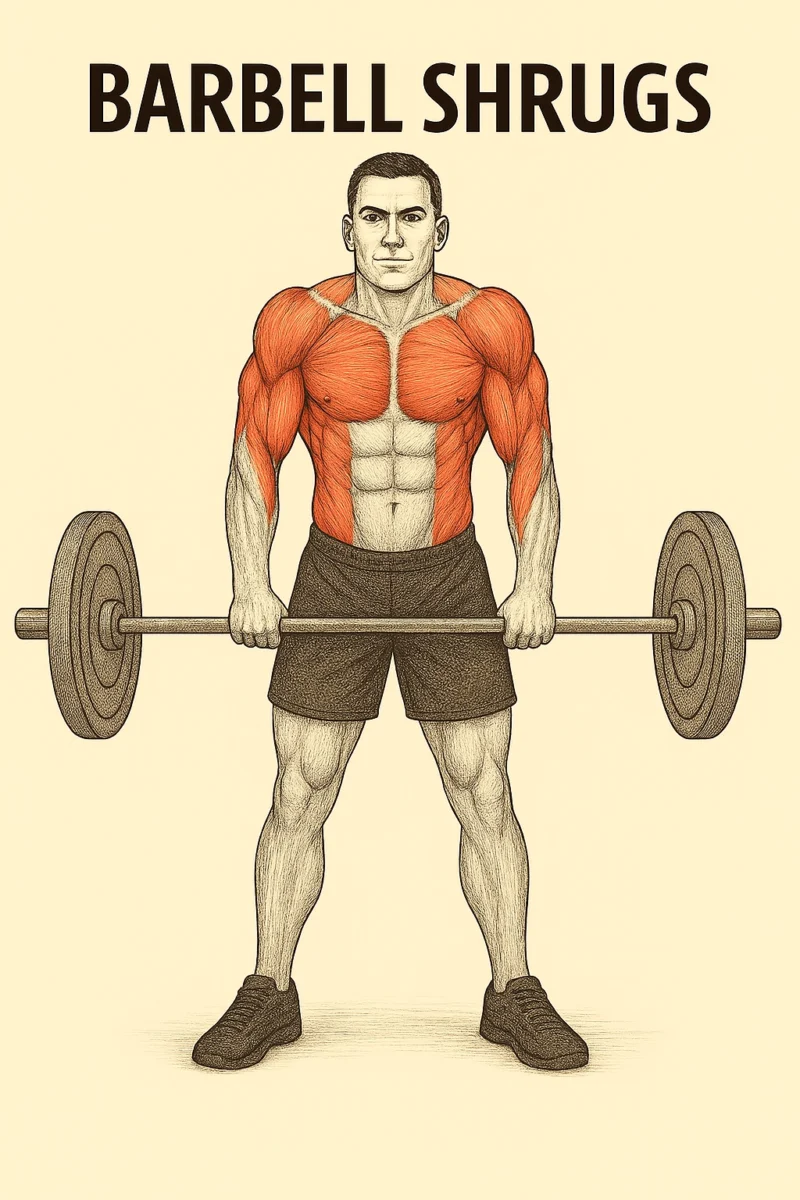
#Exercise Tips:
Despite their simple appearance, barbell shrugs remain one of the most effective exercises for building massive traps and upper back strength.
Your trapezius muscles require consistent tension and proper form for optimal growth, so avoid relying on momentum or engaging your rear deltoids.
You can also vary your workouts by alternating between hex bar and narrow-grip barbell rows for maximum development.
To Wrap It All Up
Like Arnold’s relentless pursuit of his bodybuilding dreams, you’ve now got the blueprint for building a powerful back with barbells. Remember to focus on proper form, progressive overload, and consistency in your training.
Whether you’re aiming to develop a back as broad as a barn door or as strong as Atlas himself, these exercises will help you achieve your muscle-building goals. Now go hit the gym and make it happen.
FAQs
What Are the Best Barbell Exercises for Back Growth?
The best barbell exercises for back growth include barbell bent-over rows, Pendlay rows, T-bar rows, deadlifts, and barbell shrugs. These exercises target the lats, traps, and rhomboids effectively to build mass and thickness.
Can Beginners Do Barbell Back Workouts Safely?
Beginners can do barbell back workouts safely by using proper form, starting with light weights, and focusing on controlled movements. Consulting a certified trainer for guidance ensures correct technique and injury prevention.
Best Barbell Back Workout Routine for Mass
A barbell back workout routine for mass includes bent-over rows, deadlifts, T-bar rows, Pendlay rows, and shrugs. Perform 3-4 sets of 6-10 reps each with progressive overload to build back thickness and width effectively.
Barbell Back Workout vs Cable Back Workout
The main difference between barbell back workouts and cable back workouts is that barbell exercises build mass and strength using free weights, while cable workouts provide constant tension, greater isolation, and safer options for joints.
How to Combine Barbell Back Workouts With Deadlifts
Combine barbell back workouts with deadlifts by performing deadlifts first as a primary lift, then follow with rows and shrugs. Limit total volume to prevent overtraining and allow adequate recovery between sessions.
Best Barbell for Back Workouts to Buy
The best barbell for back workouts to buy is a standard Olympic barbell weighing 20 kg (44 lbs) with a 28-29 mm diameter and medium knurling for grip. Brands like Rogue Fitness and REP Fitness offer durable options.
Buy Barbell Back Workout Program Online
Buy a barbell back workout program online from fitness platforms like Bodybuilding.com, TrainHeroic, or personal trainer websites. These programs include structured routines, video demonstrations, and progression plans for optimal results.


